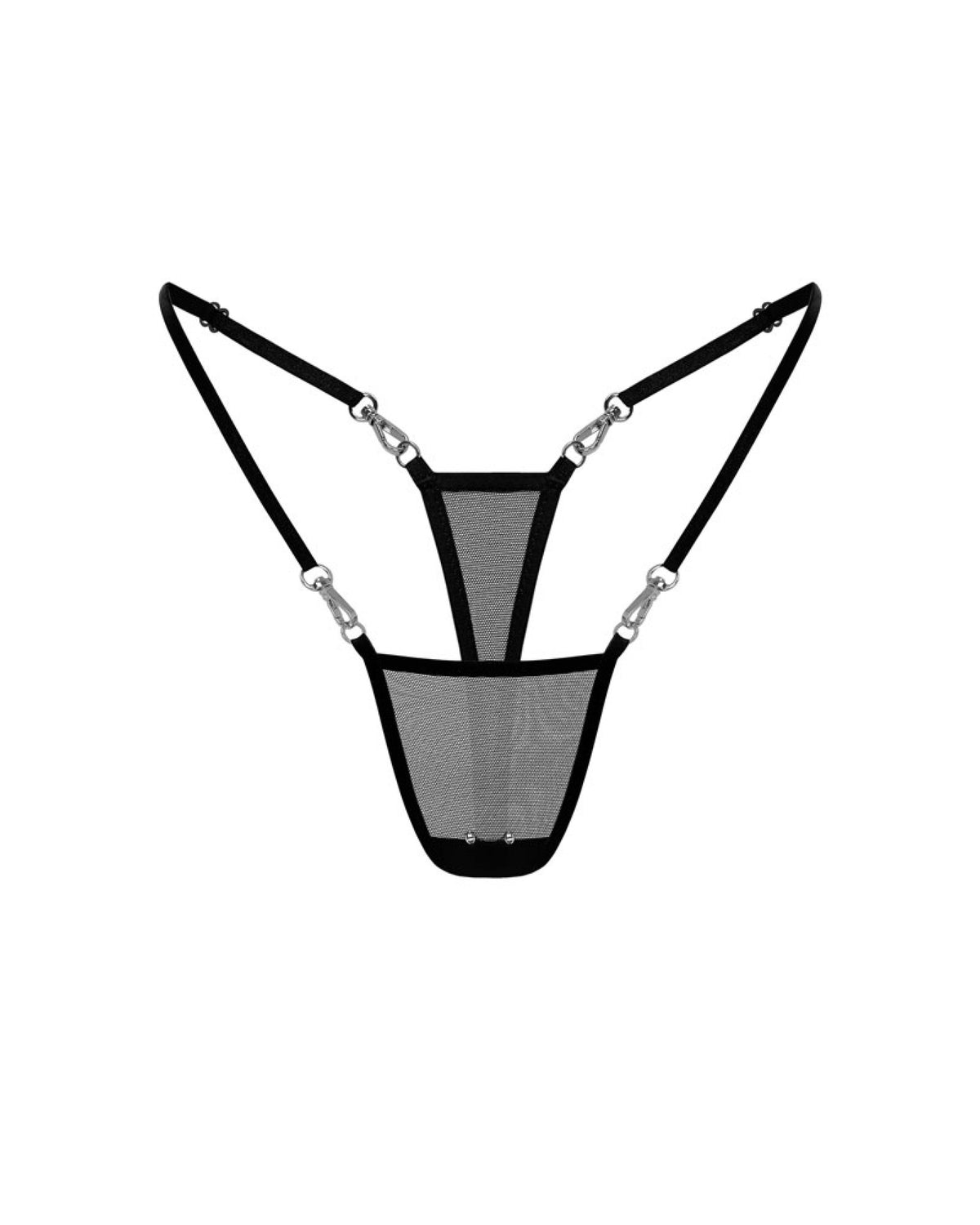
May 18, 2023
Submission Training: 5 Conditioning Techniques
Key points
- Submission training involves mental and sexual conditioning techniques utilized by both the dominant and submissive partners to establish a long-term partnership that enables the submissive to effectively fulfill the desires of their dominant partner.
- Communication and transparency occur more frequently in D/s relationships than in other relationship styles, and discussions about expectations and preferences are common.
- Effective communication is essential in any BDSM relationship, especially when it comes to submissive training.
- Submissive training involves establishing rules and boundaries, physical training, mental conditioning, and emotional development.
- Conditioning techniques for submissive training include operant conditioning, classical conditioning, modeling, differential reinforcement, and extinction.
- It is important to understand that submission involves much more than just sexual acts and requires a deep level of trust and communication between both partners.
Before we dive into a discussion of what submissive training is, we'd like to mention what it is not.
Sometimes you can meet such 'doms' online. Some individuals may offer to teach you the ways of submission and suggest sexual tasks as a means of training. However, it is important to be cautious as these tasks may not necessarily help you understand what it means to be a submissive. Furthermore, these individuals may not have your best interests at heart and may only be seeking a sexual thrill. It is important to understand that submission involves much more than just sexual acts and requires a deep level of trust and communication between both partners.
Now, what submission training really is?
Submissive training is a process that involves mental and sexual conditioning techniques utilized by both the dominant and submissive partners. The goal is to establish a long-term partnership that enables the submissive to effectively fulfill the desires of their dominant partner. Through this process, the submissive is trained to understand and meet the needs of their master or mistress.
When starting a new relationship, it is natural to want to learn about your partner's likes and dislikes, including their favorite foods, how they prefer their beverages, and their expectations for the division of housework and parenting responsibilities. However, in D/s relationships, communication and transparency occur more frequently than in other relationship styles. Discussions about expectations and preferences are common, and there may even be sessions where submissive partners practice desired behaviors. This type of training may include learning specific positions, mannerisms, phrases, or body positions to enhance the intensity and eroticism of play.

5 things to know about submission training
- Communication is Key. Effective communication is essential in any BDSM relationship. This is especially true when it comes to submissive training. It's important for the dominant partner to clearly communicate their expectations, rules, and boundaries to their submissive. This ensures that both partners are on the same page and helps to establish a sense of trust and respect between them.
- Establishing Rules and Boundaries. One of the primary goals of submissive training is to establish rules and boundaries for the submissive to follow. These rules can range from simple tasks, such as cleaning the house or cooking a meal, to more complex tasks, such as completing a certain number of push-ups or running a certain distance. Boundaries can also be established to ensure the safety and well-being of both partners. For example, the dominant partner may establish a boundary that the submissive is not allowed to engage in certain activities without prior permission.
- Physical Training. Physical training is another important aspect of submissive training. This can include exercises that help the submissive to build strength and endurance, as well as techniques that help them to better serve their dominant partner. For example, a submissive may be trained to perform certain sexual acts in a specific way or to assume specific positions for the dominant's pleasure.
- Mental Conditioning. Mental conditioning is a crucial part of submissive training. This involves shaping the submissive's mindset and attitudes to better align with the dominant's desires. This can be done through various techniques, such as positive reinforcement, punishment, and humiliation. The goal of mental conditioning is to create a submissive who is obedient, attentive, and eager to please their dominant partner.
- Emotional Development. Submissive training can also involve emotional development. This includes helping the submissive to better understand their own emotions and desires, as well as those of their dominant partner. This can be done through various methods, such as journaling, therapy, or simply having open and honest conversations with each other.
Conditioning Techniques for Submissive Training
After having an initial discussion with your submissive, the next step is to begin the actual training process. One important aspect of training is to learn conditioning techniques. The primary objective of conditioning a submissive is to present them with a stimulus and guide them to respond in a preferred manner. There are various conditioning techniques that can be utilized during submissive training, and here are a few examples.
Operant Conditioning
When utilizing operant conditioning to train a submissive, both punishments and rewards are given to encourage desired behaviors and discourage unwanted behaviors.
Positive reinforcement can be given when a submissive follows instructions and does so consistently, and this can include cuddling, kissing, compliments, massages, or giving them a favorite snack.
Conversely, negative reinforcement, such as spanking, whipping, sexual deprivation, nipple play, or electro play, can be given when the submissive stops following rules. This type of conditioning can help to reinforce desired behaviors and decrease unfavorable actions in a submissive. Enhance the positive reinforcement with luxurious items like leather bras, panties, or chokers.

Classical Conditioning
One way to understand the concept of conditioning in BDSM is to consider Pavlov's dog. The dog would salivate whenever it heard a bell because it had been repeatedly conditioned to associate the sound with the arrival of food.
In the kink world, this concept can be applied by using a specific sex toy or a particular command. For instance, using a dildo frequently could elicit a desired sexual arousal response. Similarly, a simple command like "Spread your legs, slave" can be paired with conditioning techniques to trigger an immediate response from the submissive. The command becomes the stimulus that elicits the desired behavior.
Modeling
An effective conditioning technique for training a submissive involves demonstrating step-by-step instructions on how to perform tasks correctly. If the submissive responds better to physical and verbal cues, this type of training can be highly effective and beneficial for both the dominant and the submissive. Incorporate wearing lingerie such as bodysuits, dresses, or stockings during training to visually demonstrate desired behaviors.
Differential Reinforcement
This conditioning technique involves providing positive reinforcement when the submissive exhibits a decrease in unwanted behavior. By emphasizing the submissive's progress, this method provides a lot of encouragement and is particularly effective when the training involves achieving a specific goal.
Extinction
The technique of ignoring unwanted behaviors involves withholding attention from the submissive when they exhibit undesirable actions. Some submissives may seek attention by engaging in negative behaviors, but by not acknowledging those actions, the dominant can encourage the submissive to stop engaging in them and start following their orders instead.

In conclusion, submissive training is a complex process that involves mental, physical, and sexual conditioning techniques utilized by both the dominant and submissive partners. Effective communication, establishing rules and boundaries, physical and mental conditioning, and emotional development are essential components of this training. Conditioning techniques such as operant conditioning, classical conditioning, modeling, differential reinforcement, and extinction can be used to train the submissive. It is important to remember that this type of training involves trust and respect between both partners and is not just about sexual acts. Proper understanding, communication, and consent are crucial in any BDSM relationship, especially in submissive training.






